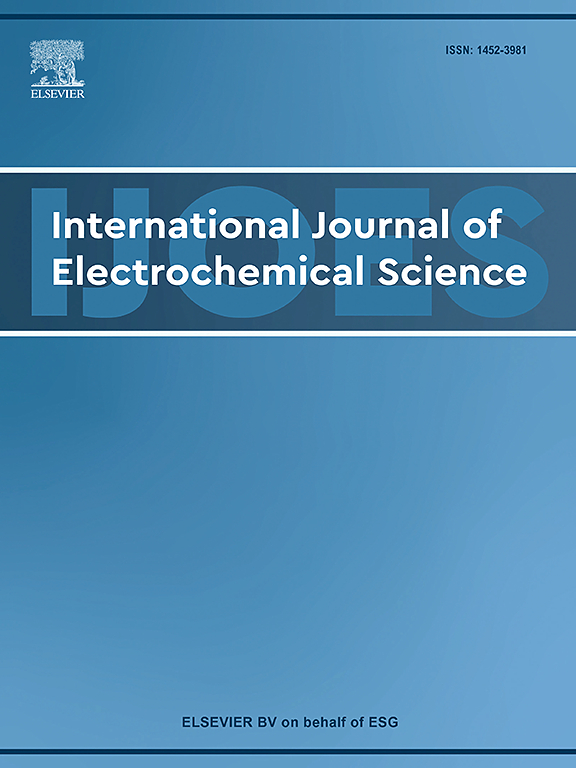Influence of sintering time on structure and electrochemical properties of La2MgNi9 hydrogen storage alloys
IF 2.4
4区 化学
Q4 ELECTROCHEMISTRY
International Journal of Electrochemical Science
Pub Date : 2025-06-09
DOI:10.1016/j.ijoes.2025.101094
引用次数: 0
Abstract
LaNi2.3 and MgNi1.55 intermediate alloys were used to prepare the La2MgNi9 alloy by vacuum powder sintering at 800 °C, and the effects of sintering time (2 h, 4 h, 6 h and 8 h) on the phase structure and electrochemical properties of La2MgNi9 hydrogen storage alloy were investigated systematically. The results show that the alloys consist of La2MgNi9 phase, (La, Mg)2Ni7 phase and LaNi5 phase, and prolonging of sintering time can promote the formation of the LaNi5 phase. It was found that appropriate sintering time can significantly enhance the maximum discharge capacity (Cmax) and improve the cycling stability (S50) as well as the high-rate dischargeability (HRD) of the alloy. For example, the alloy sintered for 4 h exhibits the best electrochemical performance with Cmax = 365.04 mAh/g, S50 = 73.62 % and HRD900 = 88.43 %. Analysis indicates that the larger cell volume, the lower pressure of the hydrogen release platform, and then the alloy sintered for 4 h showed the largest hydrogen storage in the alloy. The improvement of cycle life of the alloy was due to more homogeneous composition and higher resistance to pulverization. The electrothermal tests showed that HRD is mainly controlled by the surface charge transfer rate of the alloy electrodes.
烧结时间对La2MgNi9贮氢合金结构和电化学性能的影响
采用LaNi2.3和MgNi1.55中间合金在800℃下真空粉末烧结制备La2MgNi9贮氢合金,系统研究了烧结时间(2 h、4 h、6 h和8 h)对La2MgNi9贮氢合金相结构和电化学性能的影响。结果表明:该合金由La2MgNi9相、(La, Mg)2Ni7相和LaNi5相组成,延长烧结时间有利于LaNi5相的形成;结果表明,适当的烧结时间可以显著提高合金的最大放电容量(Cmax),提高循环稳定性(S50)和高倍率放电性能(HRD)。例如,4 h烧结合金的电化学性能最佳,Cmax = 365.04 mAh/g, S50 = 73.62 %,HRD900 = 88.43 %。分析表明,熔池体积越大,放氢平台压力越低,烧结4 h的合金储氢量最大。合金的循环寿命的提高主要是由于合金成分的均匀性和抗粉碎性的提高。电热试验表明,HRD主要受合金电极表面电荷转移速率的控制。
本文章由计算机程序翻译,如有差异,请以英文原文为准。
求助全文
约1分钟内获得全文
求助全文
来源期刊
CiteScore
3.00
自引率
20.00%
发文量
714
审稿时长
2.6 months
期刊介绍:
International Journal of Electrochemical Science is a peer-reviewed, open access journal that publishes original research articles, short communications as well as review articles in all areas of electrochemistry: Scope - Theoretical and Computational Electrochemistry - Processes on Electrodes - Electroanalytical Chemistry and Sensor Science - Corrosion - Electrochemical Energy Conversion and Storage - Electrochemical Engineering - Coatings - Electrochemical Synthesis - Bioelectrochemistry - Molecular Electrochemistry

 求助内容:
求助内容: 应助结果提醒方式:
应助结果提醒方式:


